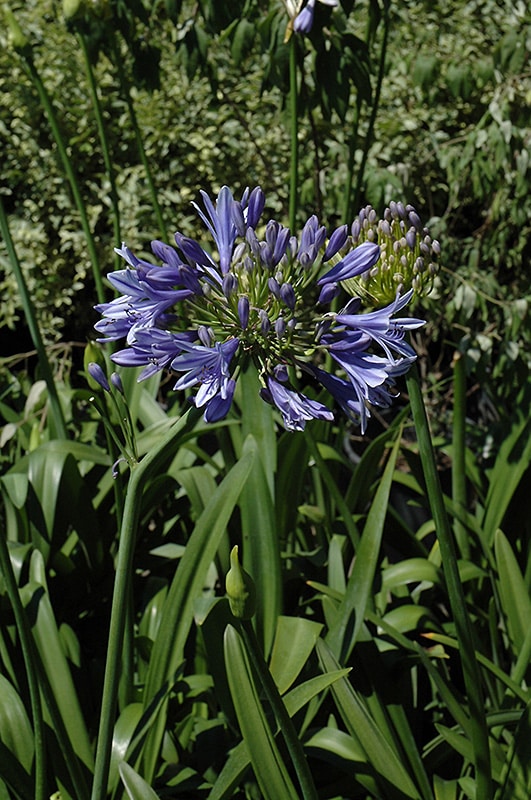Agapanthus Varieties: Selecting the most effective for Your Landscape
Agapanthus Varieties: Selecting the most effective for Your Landscape
Blog Article
Grasping the Art of Agapanthus Care: Essential Steps for Healthy Development and Lively Blossoms
In the world of horticulture, the growing of agapanthus stands as a fulfilling undertaking for those that seek to nurture these stylish flowering plants. From selecting the appropriate selection to understanding trimming methods, the journey in the direction of cultivating flourishing agapanthus plants is diverse and holds the crucial to opening the full potential of these organic gems.
:strip_icc()/purple-agapanthus-4637b426-ba6babc24ea34dce9361ec746f6ebc63.jpg)
Selecting the Right Agapanthus Selection

When choosing the best Agapanthus variety for your yard, take into consideration variables such as environment suitability, bloom color, and development habit. In addition, consider the climate in your area to make sure the Agapanthus selection you select can grow in your details problems. Recognizing the growth routine of different Agapanthus varieties is crucial for correct placement within your garden.
Suitable Growing Conditions
Taking into consideration the optimum ecological demands is vital for effective Agapanthus farming. Agapanthus grows in well-draining soil with a somewhat acidic to neutral pH level. When growing, choose a location that receives full sunlight to partial shade. In hotter environments, supplying some mid-day shade can avoid scorching of the leaves. Agapanthus plants are sensitive to cold temperature levels and ought to be secured from frost throughout winter season.
To make certain healthy and balanced growth and dynamic flowers, plant Agapanthus bulbs at a depth of regarding 2-4 inches and room them 8-12 inches apart. Mulching around the base of the plants assists retain wetness and suppresses weed growth.
Watering and Feeding Tips
Maintaining appropriate dampness levels and supplying necessary nutrients are key components in the treatment routine for Agapanthus plants. When it comes to watering Agapanthus, it is crucial to strike a balance. These plants favor consistently damp dirt but are prone to root rot if overwatered.
Feeding Agapanthus is important for advertising healthy development and respected blooms. Apply a well balanced plant food, such as a 10-10-10 formula, in the very early springtime as new development arises. Repeat this application every 6-8 weeks throughout the expanding period. Avoid excessive fertilizing, as it can lead to lush vegetation at the expenditure of blossoms. Constantly adhere to the producer's instructions for proper dilution and application methods. By following these watering and feeding pointers, you can ensure your Agapanthus plants prosper and create vibrant, resilient blossoms.
Pruning Techniques for Agapanthus
Pruning Agapanthus plants at the ideal times and with appropriate techniques is critical for keeping their health and promoting ideal development and flowering. The ideal time to prune Agapanthus is in late wintertime or early springtime before brand-new growth arises.
Deadheading spent flowers can additionally redirect the plant's power right into creating even more flowers instead than establishing seeds. If you want to gather seeds for propagation, leave some blossoms to mature and completely dry on the plant.
Remember to use tidy, sharp devices to make precise cuts and reduce the risk of introducing conditions. Agapanthus. Regular pruning will certainly help keep your Agapanthus looking cool and healthy and balanced while making certain a plentiful screen of beautiful flowers
Dealing With Usual Pests and Diseases
After guaranteeing proper trimming techniques for Agapanthus, it is necessary to deal with usual parasites and illness that can impact the health and vitality of these plants. One usual bug that affects Agapanthus is the Agapanthus gall midget.
Another common concern is fungal fallen leave place, which offers as dark sores on the fallen leaves. To avoid fungal conditions, guarantee good air blood circulation around the plants, stay clear of overhanging watering, and get rid of any contaminated fallen leaves promptly. Additionally, Agapanthus plants can experience origin rot if they are planted in inadequately draining pipes dirt. To avoid this, more helpful hints plant Agapanthus in well-draining dirt and prevent overwatering. By being alert and taking prompt activity versus bugs and conditions, you can help your Agapanthus plants grow and create vibrant blooms.

Conclusion
To conclude, mastering the art of agapanthus care entails choosing the ideal range, offering perfect growing conditions, proper watering and feeding, suitable pruning techniques, and resolving common bugs and diseases. By complying with these essential actions, you can make sure healthy growth and vivid flowers for your agapanthus plants. Keep in mind to on a regular basis keep an eye on and keep your plants to promote their general well-being top article and durability.
To make sure healthy and balanced growth and lively blossoms, plant Agapanthus light bulbs at a deepness of about 2-4 inches and area them 8-12 inches apart. By following these watering and fertilizing ideas, you can ensure your Agapanthus plants prosper and generate vivid, find out here now durable flowers.
One usual bug that affects Agapanthus is the Agapanthus gall midget. Furthermore, Agapanthus plants can endure from origin rot if they are planted in improperly draining dirt. By complying with these important steps, you can make sure healthy and balanced growth and lively blooms for your agapanthus plants.
Report this page